November 1, 2010
USB3 Speed Comes to the Mac
$258.00 (AV Drive/PCIe USB3 Card Bundle)
CalDigit Store
By David A. Saraceno
No shipping Macintosh computer supports USB3, a curious omission for a company that historically has embraced new technology. The omission is more acute given the USB3 specifications: up to 4.8Gbps data transfers, compatibility with USB1 and USB2 peripherals, and low cost. Although FW800 is supported in nearly all Mac laptop and desktop systems, eSATA is a 3rd party option, and only the pricey 17-inch MacBook Pro, and some older 15-inch MBPs carry an ExpressCard 34 slot.
Enter CalDigit’s AV drive, a Mac compatible SuperSpeed USB3 external hard drive bundled with either an ExpressCard 34 or PCIe card and a custom Mac driver. My evaluation package easily installed in an available PCIe slot in a 2009 MacPro. Compatible MacBook Pro owners can purchase the ExpressCard 34 bundle with the drive. The 1TB AV USB3 drive performed surprisingly well using USB3, and provided the fastest write speeds I’ve seen for a FW800 device.
What’s In The Box. CalDigit bundles the drive, USB3 and FW800 cables, external power supply, QuickStart Guide, and either an ExpressCard 34 or PCIe USB3 board depending on your needs. A 2TB version is also available. The drive is housed in an aluminum enclosure and weighs 3.3 pounds. It measures 1.79”x5.37”x8.31”, contains a power port, two FW800 ports, security lock, and USB3 port on its back. The drive connects via USB2 using the supplied USB3 cable. USB2 cables are not compatible. CalDigit sells additional 3 foot ($14.99) and 6 foot ($19.99) USB3 cables.
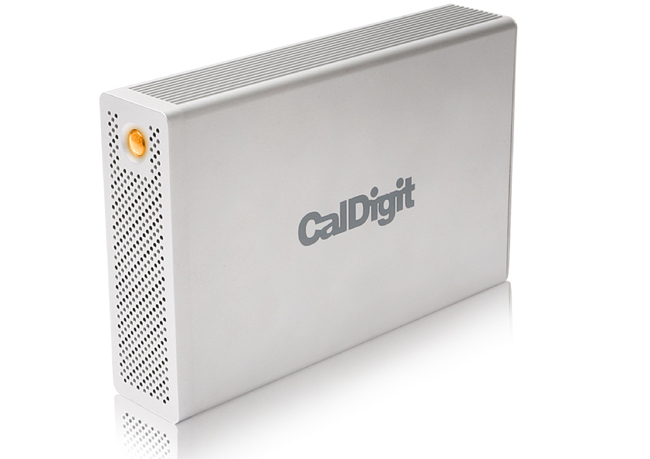
A front positioned indicator light is used initially to power on the drive and displays on/off status. If the button is depressed for a few seconds, the drive will be powered down. The drive will sleep when not in use. The back mounted “smart” fan controls temperature. CalDigit declined to identify which drive mechanism is used, but indicated that all drives must pass a stringent certification process to be used in the enclosure. The mechanisms spin at 7200 rpm, include a 32 MB or greater drive buffer, and have a 8.9ms average seek time.
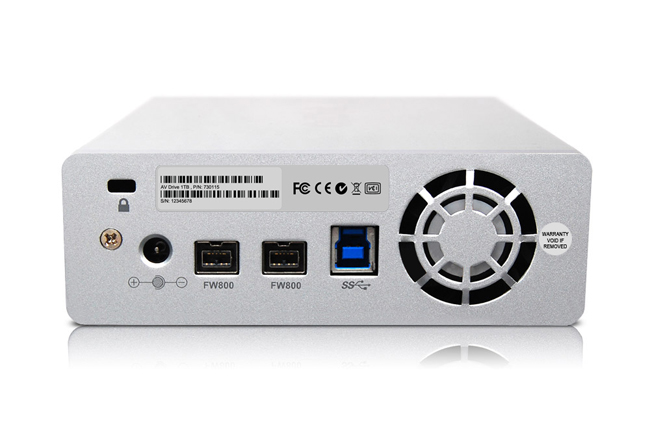
You can purchase the USB3 drive separately ($199.00/1TB). Also available separately is the two port USB3 ExpressCard 34 card ($89.00) and the two port USB3 PCIe card ($79.00), both of which include one USB 3.0 cable. A 2TB drive is sold in a bundle or separately.
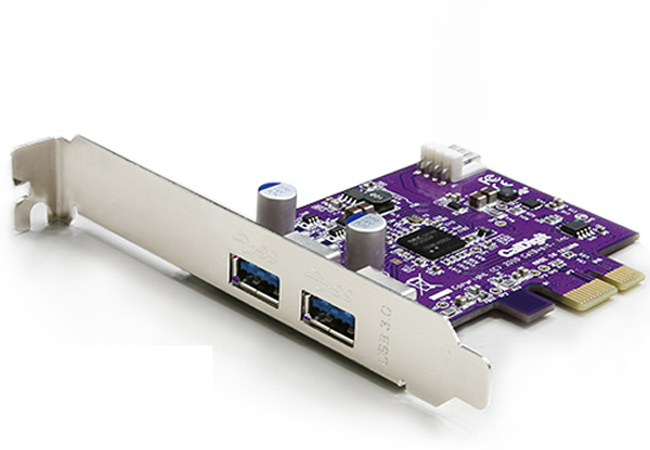
Setup and Installation. CalDigit automates the process to format the drive and install the Mac driver. First, mount the drive using the FW800 connection. The company’s drive assistant formatter appears, recognizes the Mac OS, and prompts to initialize the drive as a MacOS extended device.
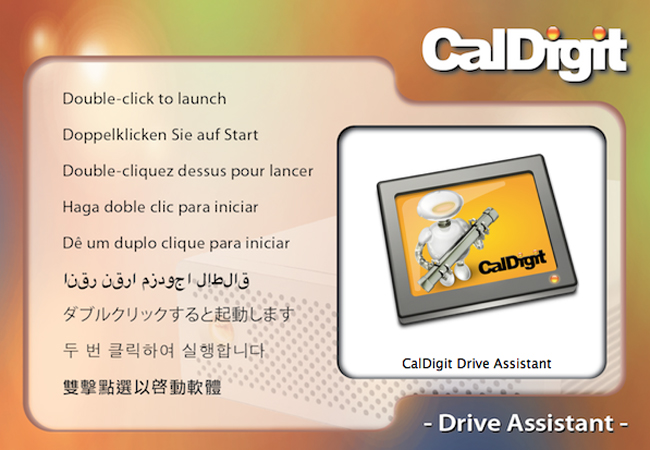
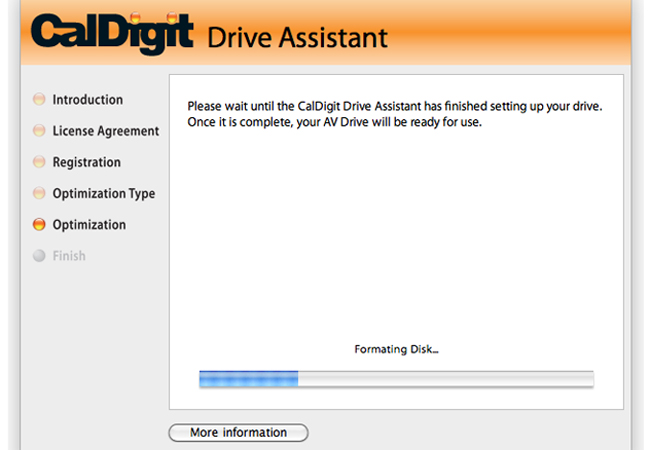
Once initialized, copy the USB3 driver, backup utilities (Carbon Copy Cloner), and raid utility off the drive, install the driver, and reboot your Mac. Install the PCIe card in an available slot on your MacPro, and connect via USB3. The bundled utilities and driver are also available for download at the company’s web site. The whole process, including the install of the PCIe card, took about 10 minutes.
Performance. Once powered up and connected via USB3, the drive mounted on the desktop. The Kona System Test utility was used to test USB3, FW800, and USB2 performance. Here are the results:
Read/write speeds for an empty USB3 drive were spectacular. The 145 MB/s write/reads were 30% faster than any internal SATA drive I have tested.
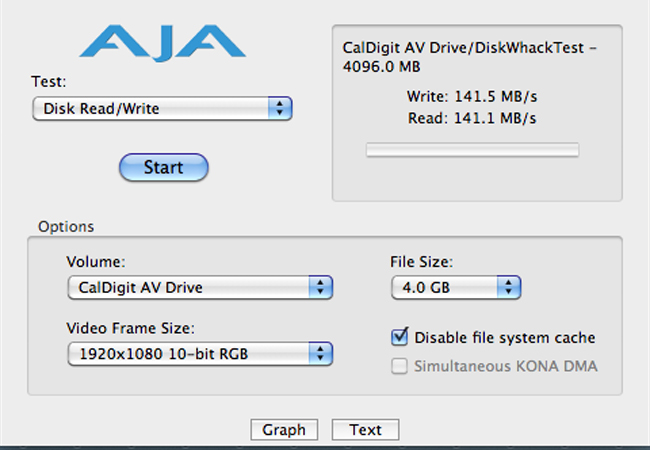
I then transferred 750 GB/s of data from an internal SATA drive to the empty CalDigit AV drive using USB3. The transfer tool just over 120 minutes, which indicates that the USB3 drive is limited the slowest drive it is transferring to or from.
Read/write speeds for a nearly full drive dropped significantly -- about 95 MB/s write read, but still were impressive. Similar drops in speed or also characteristic of SATA drives.
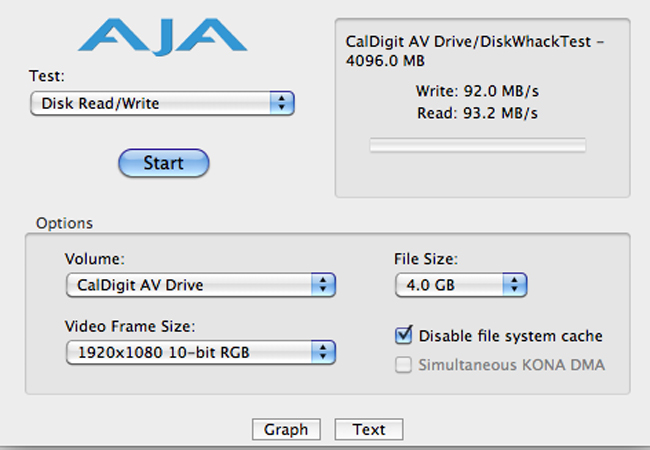
The surprising results were for FW800 write speeds. At 85 MB/s, the write speeds were 25% faster than any other FW800 drive I’ve tested.
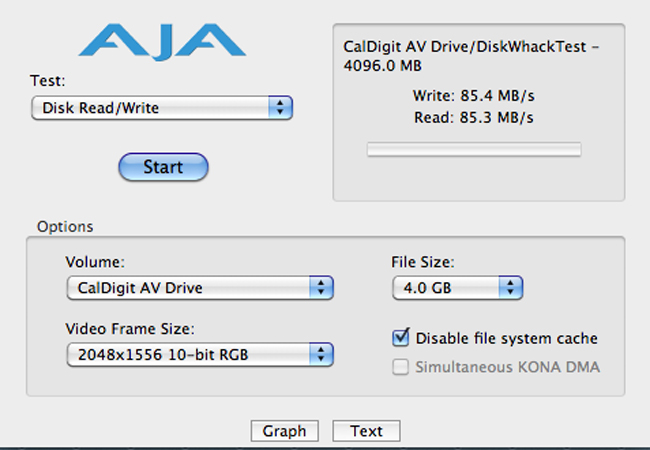
Finally, here are the tests results for USB2:
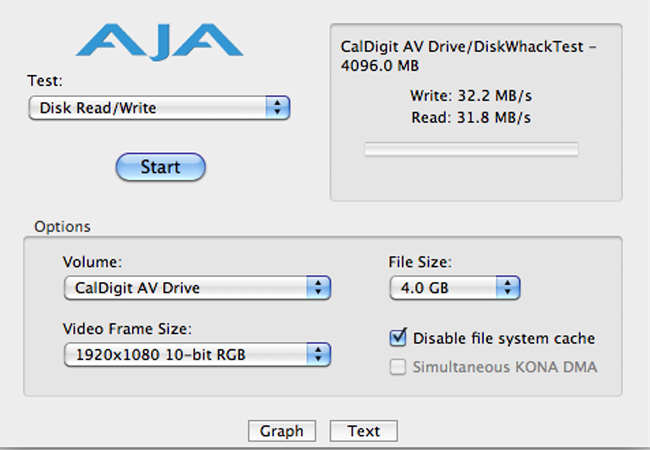
Final Thoughts. The AV drive is a versatile device. It functions in three modes: USB3 with compatible Mac card; FW800 at increased write speeds, and USB1 or 2 with any Mac or PC. But its real appeal is tethered as a USB3 drive. As indicated, the drive is faster than any shipping standalone FW800 or eSATA drive that I’ve tested, and installation in a supported MacBookPro or MacPro with the appropriate card is straightforward.
Apple has not yet implemented onboard USB3 or eSATA on any shipping Mac, which presents challenges to potential Mac USB3 adopters and opens the door for 3rd party solutions like CalDigit. The company has done well in providing a relatively low cost bundle for qualifying Mac computers. However, its custom Mac driver is not guaranteed to be compatible with other USB3 hard drives, so be forewarned when purchasing other USB3 devices.
Whether Apple will eventually provide on board USB3 is difficult to assess as new standards emerge. Apple hasn’t implemented the newest standards for Firewire, and has eschewed onboard USB3 in its latest hardware. Other protocols are on the horizon, including Light Peak, an Intel developed, exceedingly fast optical cable technology that promises a bandwidth of 10 Gbit/s initially. However, CalDigit’s AV drive is available now, is reasonably priced, works with Mac desktops and laptops with the appropriate card, provides the fastest throughput currently available in this form factor, and exceedingly fast FW800 transfers. That is a tough package to beat.
Copyright ©2010 David A. Saraceno
David A. Saraceno is a motion graphics artist located in Spokane, Washington. He runs a video blog and review site called secondchairvideo that provides up to date information on most things Final Cut Pro and video related. He has written for DV Magazine, AV Video, MacHome Journal, and several state and national legal technology magazines. David moderates several forums on 2-pop.com, is active on the Apple Support Discussions forum for their Pro Applications, ranked as among the highest contributor as a Level IV in the pro apps forums, and contributes at dvxuser.com.
[Top]
copyright © David A. Saraceno 2010
© 2000 -2010 Ken Stone. All rights reserved. Apple, the Apple logo, Final
Cut Pro, Macintosh and Power Mac
are either registered trademarks or trademarks of Apple. Other
company and product names may be trademarks of their respective
owners.
All screen captures, images, and textual references are the property and trademark of their creators/owners/publishers.